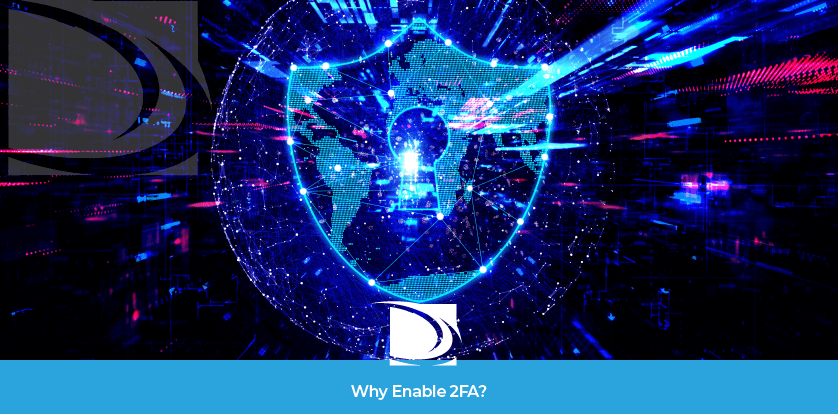
What is 2FA
Living in the digital era, there is a concern for security. Accounts can be compromised by means of stolen credentials. Two-factor authentication (2FA) utilizes an additional form of identity verification on top of the password to help ensure personal information remains secure. This creates a double barrier of virtual safety nets between the user’s information and hackers.
Authentication Methods
There are many different types of authentication methods that when coupled with a password can provide better security for personal information. Here are some of the most used authentication methods.
CAPTCHA is a security measure referred to as a challenge-response to determine if the user attempting the login is human. In fact, CAPTCHA stands for Completely Automated Public Turing test to tell Computers and Humans Apart. Its main purpose is to prevent spamming software from hijacking websites.
Two-step login is an electronic authentication method that will require you to enable a phone number or email address. Once an attempted login is initiated on the account, it will generate an authentication code sent via email or text for the user to enter into the account sign-in page. Some companies offer a mobile app that the authentication is sent to and the user simply denies or confirms the attempted login. This form of certification is used for many different types of accounts, including college student logins.
Picture-based passwords allow the user to set up a series of images that are later used to sign in.
One-time passwords (OTPs), also referred to as one-time PINs, are dynamic passwords that are only allowed to be used for single login sessions.
Access badges, or authorization badges, are cards that can be used to authorize entry. This type of identification authorization typically requires a thin client to serve as a badge reader and is commonly used to access work buildings or secure locations or devices.
Biometric authentication involves a unique biological characteristic to ensure secure login. Some characteristics include fingerprints, face or iris recognition, and voice identification. This type of verification is frequently used by healthcare providers to secure and exchange patient health information and other professions that require similar security.
The Benefits of 2FA
There are many recommendations to consider in order to create strong passwords. Here are some top suggestions:
- The longer the better – use a long string of words
- Use a combination of numbers, upper and lowercase letters, and symbols
- Create distinct passwords for each account
- Use random characters

While these are all great rules of thumb to keep in mind when setting up a new password, how effective are they if the password gets stolen through a phishing campaign? How strong would that nonsensical 25-character long password be then? These recommendations should still be followed, but it is essential to add an additional layer of security. This increases the odds of a hacker bypassing both.
Did you know? Phishing scams are the leading cause of ransomware infection, according to 54% of managed service providers in a 2021 survey.
Multi-factor Authentication (MFA)
While 2FA allows the use of a second method, multi-factor authentication (MFA) supports two or more. Adding more can strengthen the security of the account.

Did you know? Users are still setting up weak passwords like “654321” and “password.” In fact, 753,305 LinkedIn users have “123456” set as their password. The next on their list of weakest passwords is “linkedin.”
How to Enable 2FA
Enabling 2FA can differ from one account to another because it depends on the second authentication strategy being implemented. The first step is to create a username and password for the account. Then, the second authentication type needs to be established. This can require the user to use a mobile device to authenticate via email, text, facial recognition, or other similar means. If the second type is a badge, it will require admin configuration. The setup for each type of personal verification can vary.
2FA: Secure Your Information
Two-factor authentication includes two methods of identification. One includes what you know, which is the password you initially use when setting up the account. The other includes what you have. That can be a cell phone, a badge, or anything else that is physically in your possession. It can also be “what you are.” These types of authentication include something related to the biological characteristics that are unique to you. Considering our digital climate, 2FA is an extra layer that is vital for protecting your personal information.
If you found this useful, why not share it? If there’s a topic you’d like to know more about, reach out and let me know. I’ll do my best to bring you the content you’re looking for!
Here are some more interesting reads:












